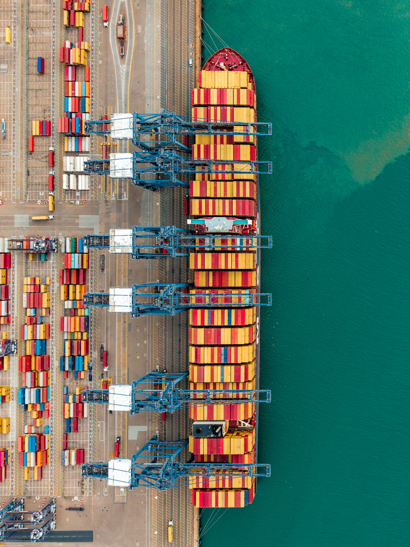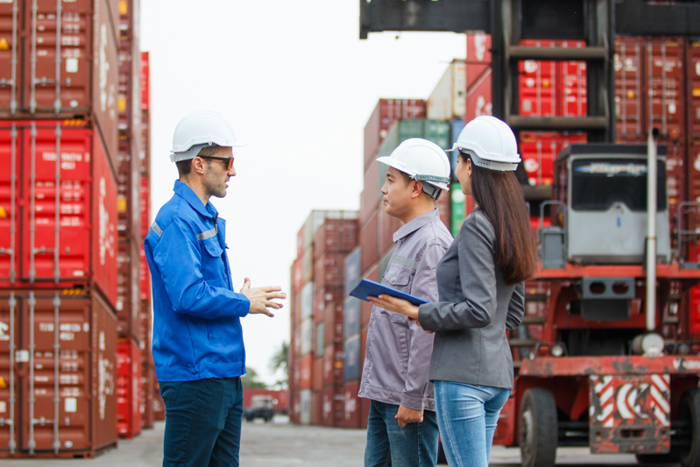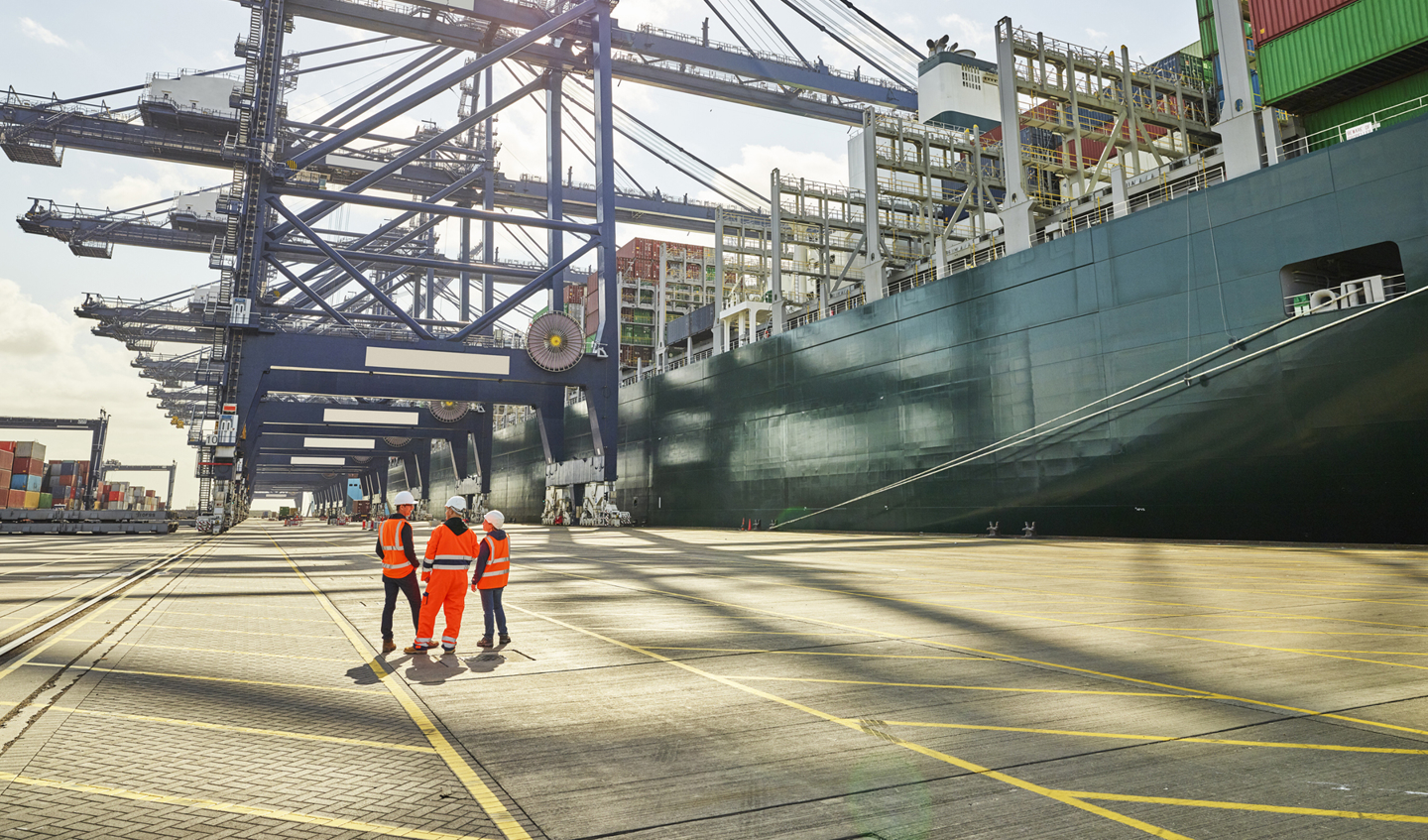If you seek a definition for ‘resilient’, responses will vary slightly depending on the source. But this one from the Cambridge University Press appealed to me – ‘the ability to bounce back, recover and adapt positively after facing difficult or adverse situations.’
If we apply this definition of resilience to ports, it may seem daunting, but ultimately it’s what every port is, or should be, aiming for. The ability to be able to ‘bounce back’ or ‘navigate’ unforeseen obstacles is challenging but not impossible, and ever more necessary in today’s changing landscape. Geopolitical unrest is evolving trade flows, digitalisation is increasingly being adopted and there is mounting pressure for ports to decarbonise their operations from not only their ship-owning and operating clients, but also from regional and national legislation.
Tailored solutions, robust asset management, and forward-thinking strategies are needed to enable ports to navigate uncertainties, whilst remaining secure and adaptable.
Meanwhile, the landscape is evolving and challenges of today will be different to those in 10 years. A resilient port will recognise this and implement strategies to ensure that its long-term ambitions are able to withstand change, and, ideally, take advantage of whatever the future holds.
No ‘one size fits all’
Each port is different and requires its own unique blend of efficiency, performance, security and regulatory compliance.
Ports’ unique locations at the interface of land and water exposes them to both at-sea and land-based challenges. Rising sea levels and extreme weather events are threatening infrastructure and operations in many locations, including parts of Asia, the Gulf and East Coasts of America, and small island states. Proactive adaptation in these areas is key and could include major structural change including raising quay walls, relocating facilities, or even reclaiming land offshore.
Meanwhile, many port facilities are ageing, with little significant investment in decades. Periods of change, such as we are in right now, are the ideal time to take stock of assets and infrastructure and review their exposure to risks, from an environmental and commercial perspective, and where necessary make investments that will future-proof these assets in the long term. Regular site evaluations can help identify short-term needs and anticipate long-term requirements, such as replacing or upgrading assets to accommodate larger ships, new types of cargo, or providing zero- or near-zero (ZNZ) - bunker fuels to vessels.
With decarbonisation prompting the development of new fuel supply chains, many ports could be set to play a key role in implementing emissions free shipping, but there is much work to be done both at sea and on land to support the industry’s energy transition.
Industry’s efforts to train seafarers in the handling of ZNZ fuels are well publicised, including the work of the International Maritime Organization, but less is happening around training in ports. With fewer binding international rules, most activities are centred around pilot projects, national initiatives or European Union-funded programmes. Any facility considering handling complex and hazardous products, such as these new fuels, will need to put in place new policies and standard operating procedures to safely manage the transition, including what are often confidential and bespoke approaches to security and risk management.


Collaboration for a digital future
And it’s not just physical assets and hardware. A resilient port must embrace digital solutions for increased operational performance and to remain relevant within the wider, increasingly digitalised, end-to-end maritime supply chain.
Port digitalisation has, however, lagged behind other sectors, with many ports still reliant on outdated infrastructure. There is a considerable work to do in this space that goes beyond IT. Implementing the Smart Port concept and Port Community Systems, AI-based logistics, Digital Twins and the Internet of Things are considerable in themselves, but potentially more challenging is the cooperation required to realise the full potential of what these systems can offer. Deeper collaboration across ports, shippers, and logistics providers to develop integrated, interoperable systems is needed for long-term success within a connected supply chain and those that ‘come to the party’ in good time will be well-positioned for the future.
Increased digitalisation does of course come with increased exposure to cyber risks. Cyber security is no longer a secondary consideration and, along with security more generally, is now firmly on agendas at boardroom level. Ongoing vigilance and robust digital assessments are essential to identify and address vulnerabilities within systems.
‘Path to resilience’
Each port facility faces its own set of challenges, shaped by its location, the types of cargo it handles and demands of its local physical and regulatory environment.
A complex landscape faces port authorities, operators, and their advisors, with the path to resilience multifaceted, requiring a blend of technical expertise, regulatory awareness, and adaptability. Now is a good time to review where your port sits in the current landscape and consider its longer-term future. By embracing tailored strategy, investing in asset integrity, and planning for both immediate and long-term challenges, ports can give themselves the best possible chance for long-term success.
Port resilience is not a destination but an ongoing journey, that demands vigilance, innovation, and a deep understanding of a port’s unique environment.

A pulse on ports’ energy and digital transitions
LR’s Global Maritime Trends (GMT) Barometer 2025, an annual assessment of the industry’s progress on the energy and digital transitions, identifies key areas of improvement for ports. From an energy transition perspective, the report reveals that ports are ‘critically misaligned’ with the trajectory needed to achieve net-zero by 2050. It notes that whilst many major ports have made significant strides in advancing their decarbonisation efforts, others are in the early stages of development.
The port community is similarly behind in the digital transition, with many ports still relying on outdated infrastructure. While the smart port market shows promising double-digit growth, unlocking its full potential requires deeper collaboration among ports, shippers, and logistics providers to develop integrated, interoperable systems, says the report. Equally crucial are investments in standardised data-sharing frameworks and cutting-edge technologies to create seamless digital connectivity across the maritime supply chain.






